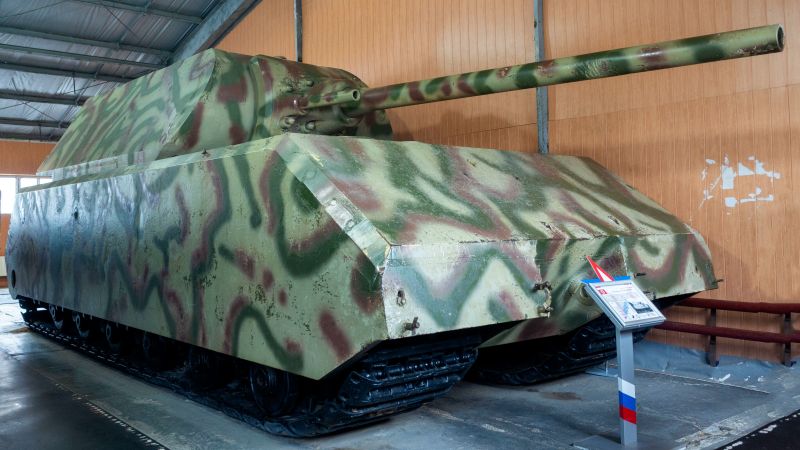
During the height of the Second World War, Adolf Hitler pursued the design of the world’s heaviest super tank that would crush Germany’s enemies on the battlefield.
The German Panzerkampfwagen VIII Maus was the heaviest tank ever created, weighing in at 188 tonnes.
Armed with a powerful gun, protected by thicker armour, and powered by an engine created by Porsche, the Panzer VIII was the secret monster tank that never was.
The Maus tank was designed to contend with the Russian tank models which had thicker armour and heavier firepower.
Production on the super heavy tank began in 1943, and the Maus was first fitted with a 15cm gun, but this was later changed to a 12.8cm gun.
During the planning stage, the addition of a flamethrower to the tank was considered but later dropped.
The tank was protected by 200mm thick armour plating on its front and had a maximum speed of 25km/h (15.5mph).
Its Porsche engine had 1,750 horsepower and could travel a maximum distance of 190km before refuelling.

The super tank would have been crewed by six men, and was 10m long, 3.71m wide and 3.7m high.
Due to the size and weight of the Maus, it was unlikely it could have travelled across bridges or difficult terrains.
Only two Maus tanks were ever created and tested in late 1944.
The two prototypes were later blown up before the advancing Russian army reached the testing grounds in 1945, and it is unlikely any Maus tanks ever saw combat.
The Russian forces married the turret from the second tank with the hull from the first and took the vehicle to Moscow for evaluation.
The surviving hybrid tank is on display at the Russian Tank Museum at Kubinka.
